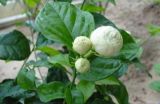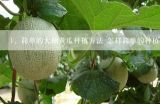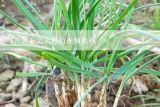可数、不可数、既可数又不可数名词,sald是不可数名词还是既可数又不可数名词?

1、可数、不可数、既可数又不可数名词
可数:banana/carrot/French fries/hamburger/egg/apple 不可数:broccoli/ice 既可数又不可数:salad/vegetable/ice-cream/chicken。

2、sald是不可数名词还是既可数又不可数名词?
我查了字典,貌似没有sald这个单词呢。。只有salad(沙拉)和said(say的过去式和过去分词)。

3、同1意思下,既可数又不可数名词如何区分?
名词性从句是在句子中起名词作用的主谓结构,它可以在主从复合句中作主语、宾语、 表语、介词的宾语以及同位语。 1. 主语从句 主语从句可以由连词that, wh-疑问词或名词性关系词引导。 ⑴由连词that引导:从句可以位于句首,但常常用形式主语it替代,从句本身则放在 主句后面,如: that he will come to the party is certain. it happened that the harvest was bad that year. is it true that she has never been there? 通常在口语或非正式文体中,that常可省略,但必须是在用先行词it的情况下,如: it’s a pity (that) you are leaving. ⑵由wh-疑问词引导:从句既可以前置,又可以借助于先行词it后置。如: who cleaned the meeting room is unknown. it’s still a question when we shall have our sports meet. it is uncertain whether he will come. 注意:在疑问句中,wh-疑问词所引导的从句不能位于句首,如: is it known where she went? ⑶主语从句也可由名词性关系词引导,这类从句只能位于句首,如: where she went was los angeles. what will be, will be. whomever you invite will be welcome. 2. 宾语从句 ⑴宾语从句可用that引导,这时that仅起连接作用,不充当从句中的成分。如果连接词 要在从句中起语法作用,就要使用连接词what等来引导从句。 i believe that he is honest. we fully understood what he meant. ⑵有些形容词的后面也可跟宾语从句。这类形容词有:certain, afraid, aware, sorry, sure, worried等。如: i’m afraid that you are wrong on this point. i am aware that you have been exceptionally kind to me. ⑶宾语从句也可以用how, when, who, which, where, why等词引出,此时即使主句是1 个疑问句,宾语从句也必须保持陈述句的语序。如: go and ask why he was late yesterday. can you tell me where the hospital is? ⑷跟在介词后面的宾语从句1般不能由that来引出,只限于except, in, but, besides, save 等5个介词的宾语从句,其它介词后面不能跟由that引出的宾语从句,而只能跟由what, how, whether等引出的宾语从句。 you are wrong in that you took effect for cause. i would go with you, except that i have to work that day. they were arguing about what was to be done. i’m thinking of whom i should ask for help. 3. 表语从句 表语从句通常由that引出,当然how, why, where, when等也可以引出表语从句。常见的 表语从句有下面两种句型: ⑴"the reason…that":表示“原因是……”。如: the reason for leaving was that it was too cold. ⑵"it (this, that) is because…":表示“这是因为……”,“这是由于……缘故”。如: this is because iron contains more carbon than steel. 4. 同位语从句 同位语从句表示与之同位的名词中心词的实际内容。 ⑴同位语从句起进1步解释说明先行词的作用,通常由that引导。同位语从句的先行词 通常是1些抽象名词,如:appeal, idea, truth, fact, theory, belief, plan, hope, proposal, rumor, suggestion等。 there is truth in the old saying that necessity is the mother of invention. ⑵由wh-疑问词引导,如: i have no idea when he will come. it is difficult to answer your question why i did it. ⑶由名词性关系词引导,如: fame and fortune—what others sought after with zest—was all rubbish to him. ⑷注意同位语和that引导的定语从句的区别:that在同位语从句中只起引导从句的作用, 本身并无意义,也不在句子中担当任何成分;而定语从句的that既引导从句又充当句子成分。 the news that he intended to come gave us much pleasure.(同位语从句,that不作句子成 分。) he is the best speaker that addressed the meeting.(定语从句,that在从句中作宾语,指代 的先行词是主句中的主语。)。

4、有哪些既可数又不可数的名词
onion, lettuce, salad, fruit, food, ice cream, chicken,green onion, turkey,broccoli,orange.这些是既可数又不可数的。 vegetables, noodles,dumplings,people,singles1般只用复数形式。

5、有哪些既可数又不可数的名词
onion, lettuce, salad, fruit, food, ice cream, chicken,green onion, turkey,broccoli,orange.这些是既可数又不可数的。 vegetables, noodles,dumplings,people,singles1般只用复数形式。

6、fruit是既可数又不可数的名词吗?
。




































































